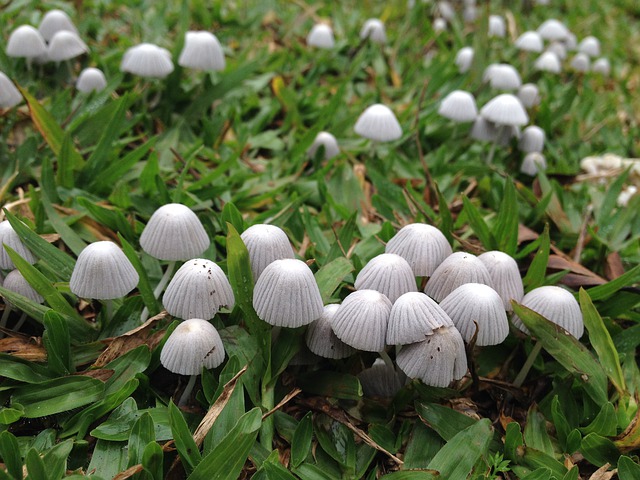
While most mushrooms you find in your lawn are not poisonous to humans, they can be poisonous to animals. With so many different mushrooms species that can grow in your lawn, it's important to know which ones are poisonous and which ones aren't, however, as a general rule of thumb, you should always presume that a mushroom in your lawn is poisonous until you can say with 100% certainty that it is not.
Identifying poisonous mushrooms in your lawn
There's a wealth of information online about the mushrooms that are poisonous to humans and animals, so when it comes to identifying poisonous mushrooms we'd recommend starting there. Take a photograph of the mushrooms in your lawn and note any of the obvious features. For example, the colour, shape and size of the mushrooms. You can use this information to search online and identify the species of lawn mushroom.
There are a lot of mushrooms that are commonly found in UK lawns, but there are thousands of species of mushrooms out there. It's important that the mushroom in your lawn and the mushroom you've found online are the same, otherwise you could risk leaving mushrooms in your lawn that are potentially poisonous to you, your children and/or your pets. We'd recommend looking at reliable sources of information for example:
Can I eat the mushrooms growing in my lawn?
As a general rule, you should not eat mushrooms growing in your lawn and you shouldn't allow your pets to eat them either. Humans and animals have different digestive systems and different responses to different fungi, so if you discover that a mushroom in your lawn is harmless to you, it might not be so harmless for your pets.
If you're keen to forage for edible mushrooms in the wild, we'd recommend looking for a professional mushroom foraging course. There are plenty of mushroom experts across the UK who have the knowledge and expertise to help you find a plethora of edible wild mushrooms. This is a great way to explore edible wild mushrooms without risking illness by eating the mushrooms from your lawn.
What if my pet has eaten mushrooms in my lawn?
While there are some mushrooms species that are harmless to cats, dogs and other animals, there are a large number of mushrooms that are toxic. It's vital that you're extra vigilant when your pets are playing in the garden or out on a walk. Here are a few signs to look out for that might indicate your pet has eaten a poisonous lawn mushroom:
- Vomiting
- Diarrhoea
- Loss of balance
- Seizures
- Yellowing of the eyes, skin and gums
- Excessive salvation
If you suspect your cat or dog has eaten poisonous mushrooms from your lawn, it's important that you seek medical attention from your vet straight away. Some pets will eat a lawn mushroom and have no reaction for the first few hours, however, this doesn't mean that the mushroom is not poisonous. Some symptoms can take up to 12 hours to show!
Getting rid of lawn mushrooms
When you notice mushrooms growing in your lawn, the best thing to do is remove them as quickly as possible. There are ways to remove mushrooms from your lawn yourself, but you need to be careful that you tackle the problem thoroughly. If not, spores from the mushrooms can spread and create an even larger fungus problem in your lawn! We'd always recommend seeking professional help to remove mushrooms from your lawn, especially if you're unsure whether they're poisonous or not!
Read More: How to Remove Mushrooms and Toastools from your Lawn
Here at Lawn and Weed Expert, we have the knowledge and expertise to remove a range of lawn fungi including snow mould, fairy rings, slime mould and more! Click the button below to learn more about our lawn mushroom treatments.
Lawn Fungus and Mould Treatment